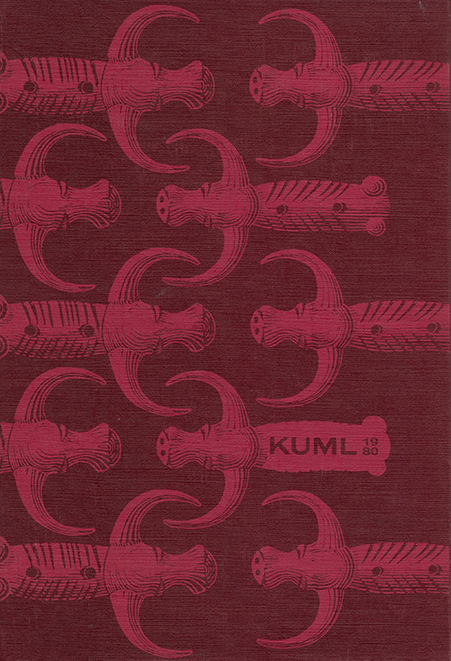Store Vildmose. Iron-Age flint
DOI:
https://doi.org/10.7146/kuml.v29i29.107193Keywords:
Store vildmose, iron age, flint, north jutlandAbstract
Store Vildmose. lron Age Flint
Store Vildmose in the northernmost part of Jutland, Vendsyssel, was until its drainage and cultivation after 1920 Denmark's largest raised bog covering about 60 sq. kms. It had successively grown on the raised floor of the Littorina Sea. In considerable parts of the area the formation of the bog first took place after a period of cultivation during at least part of the Pre-Roman Iron Age. The ploughing left marks in the sand, for example in a now state-owned 200 ha. area in the northeastern part of the bog, Grishøjgårds Krat. Here ploughmarks were uncovered during excavations in 1967-72. During these investigations boulders appeared in the surface of the sand to reveal the following:
- Under and up to a large boulder were smaller stones which together with the boulder had been transported several kilometres out from the Littorina coast by en ice floe. Among these beach stones was a fine flint blade from the Kongemose phase of the Ertebølle culture (Fig. I).
- Only the hole and some chips were left from another boulder blown up the year before the investigation. Around the hole was a heap of potsherds with a diameter of about 3 m indicating that the destroyed stone had been a cult stone (Fig. 2).
- A large granite boulder was embedded in sand with many ploughmarks surrounding it (Fig. 3). A layer over the sand surface with the ploughmarks contained close to the boulder a hammerstone (Fig. 4) and about 300 flint chips and splinters which it has been possible partly to assemble. This can be considered evidence of very late flint working. At least 3-4 wind-polished and thus surface found flint blocks had been used (Figs. 5-7). Characteristic of this flint working are the relatively great width of the chips (Fig. 8a), the coarseness of the larger chips (Fig. 8b), the frequent occurrence of hinge breaks (Fig. 8e) or of other sorts of break demonstrating the inconsistent flaking. Two of the flint blocks show respectively flaking from 3 sides and from many sides.
The material shows a degenerate flint technique with no control, no firm impact angle, no sign of the use of intermediary anvil, pressing, or the use of softer underlay. It seems that the big granite boulder formed the underlay.
A corresponding and technically even more degenerate flint material (Fig. 10) has appeared during another investigation by the author in field systems in Næsbyholm Storskov in Zealand in levels from the 1st century A.D.
These examples of flint working during Denmark's Early Iron Age -which will certainly not prove to be unique- demonstrate the last demise of a famous craft.
Viggo Nielsen
Downloads
Published
How to Cite
Issue
Section
License
Fra og med årgang 2022 er artikler udgivet i Kuml med en licens fra Creative Commons (CC BY-NC-SA 4.0).
Alle tidligere årgange af tidsskriftet er ikke udgivet med en licens fra Creative Commons.


